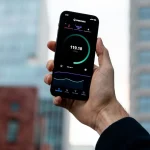Augmented Reality (AR) is no longer just a concept from science fiction. Today, it has become a part of our daily lives, especially through mobile applications. With the rapid advancement of AR technology and increasingly powerful mobile devices, AR is set to transform how we interact with both digital and physical environments. In this blog, we explore augmented reality in mobile apps, its current applications, and what the future holds for this innovative technology.
Table Of Content
- Current Applications of Augmented Reality in Mobile Apps
- Gaming and Entertainment
- Retail and E-Commerce
- Education and Training
- Navigation and Travel
- The Future of Augmented Reality in Mobile Apps
- Enhanced User Interfaces
- Improved AR Hardware
- AR in Healthcare
- AR in Marketing and Advertising
- Smart Cities and Public Services
- Social and Collaborative AR
- Conclusion
Current Applications of Augmented Reality in Mobile Apps
Gaming and Entertainment
The gaming industry was among the first to adopt augmented reality, with Pokémon GO in 2016 demonstrating its potential. Since then, many mobile games now integrate AR to provide immersive experiences, blending digital content with the real world. Beyond gaming, AR enhances social media and entertainment apps, offering interactive filters on platforms like Snapchat and Instagram.
Retail and E-Commerce
AR is transforming retail experiences by allowing virtual try-ons and previews. Apps from companies such as IKEA and Amazon let users visualize furniture or products in their homes before making a purchase. This increases customer satisfaction while reducing returns.
Education and Training
Educational apps use AR to create interactive learning experiences. Apps like Google Expeditions enable students to explore historical sites or examine 3D models of the human body. AR is also valuable in professional training, offering realistic simulations for medical students, mechanics, and other technical fields.
Navigation and Travel
AR improves navigation by overlaying directions and information on real-world views via smartphone cameras. For example, Google Maps offers AR-based walking directions, making it easier to navigate unfamiliar areas. In travel, AR apps provide interactive guides and virtual tours to enhance the tourist experience.
The Future of Augmented Reality in Mobile Apps
Enhanced User Interfaces
AR will make mobile apps more interactive and intuitive. Overlaying digital information directly onto the real world allows users to complete tasks efficiently and improves accessibility for all.
Improved AR Hardware
Advancements in smartphones, AR glasses, and headsets will enhance the quality and realism of AR experiences. This hardware evolution enables developers to create more immersive and complex applications.
AR in Healthcare
AR has tremendous potential in healthcare. Future mobile apps could assist doctors during surgeries, overlay diagnostic data on patient scans, and provide AR-guided physical therapy. Patients may also use AR for rehabilitation exercises at home, improving treatment outcomes.
AR in Marketing and Advertising
Brands can leverage AR to create interactive campaigns. AR ads can include virtual product demos, gamified promotions, or immersive store tours. This approach makes marketing more engaging and memorable.
Smart Cities and Public Services
AR can contribute to smart city initiatives by providing real-time information about public transportation, events, or emergency services. For instance, AR apps could guide citizens during emergencies or help tourists navigate a city more efficiently.
Social and Collaborative AR
AR will support collaborative work and social interactions in new ways. Platforms like Facebook Horizon and Microsoft Mesh are already exploring virtual meeting spaces. In the future, AR will enable more natural, immersive social and professional experiences.
Conclusion
The integration of augmented reality into mobile apps is still growing, yet its potential is vast. From gaming and retail to healthcare and smart cities, AR is changing how we engage with the world around us. By embracing AR technology today, businesses and developers can prepare for a future where immersive, interactive experiences become the norm.
To learn more about mobile app innovation, check out our related post: Mobile App Development Trends.






